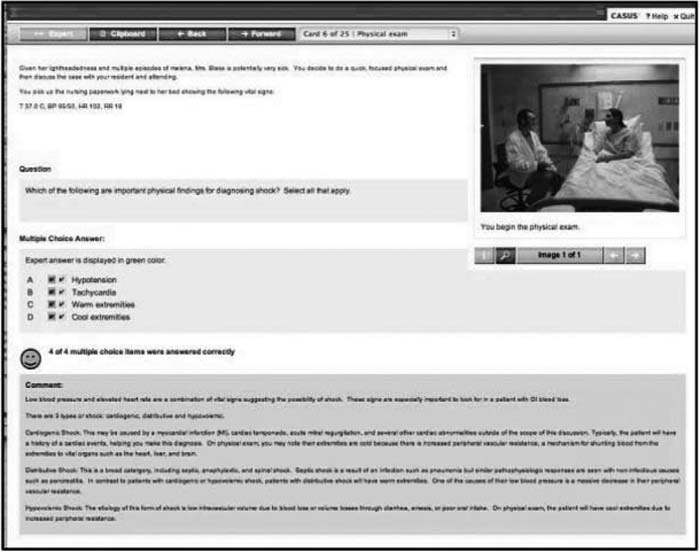Background:
In the internal medicine clerkship, students are required by the Liaison Committee on Medical Education (LCME) to see patients with each of the conditions that the clerkship director identifies as core to the clerkship curriculum. However, clerkship directors are dependent on the flow of patients into hospitals and clinics, and shorter lengths of stay limit the opportunities students have to encounter patients with these core conditions. In addition, the distribution of students to distant clerkship sites and diminishing faculty resources have created the need for a reliable format that guarantees students are consistently taught core medical knowledge and clinical reasoning skills.
Purpose:
The Web‐based case program was designed to give students the experience of “seeing” and working up patients with each of the core training problems included in a national curriculum.
Description:
The Clerkship Directors in Internal Medicine (CDIM, the national organization for medicine clerkship directors), partnered with the Institute for Innovative Technology in Medical Education (ilnTIME), a nonprofit organization, to develop a set of 36 interactive, Web‐based virtual patient cases. A national curriculum for the medicine clerkship, developed by CDIM and the Society for General Internal Medicine (SGIM), was utilized to develop the learning objectives for each case. Case authors were recruited from the membership of CDIM and under‐went training at a national meeting. Each case underwent review for both pedagogical value and accuracy of content by separate peer reviewers. The virtual cases exist on a Web‐based platform developed specifically to teach clinical reasoning to medical students. It includes interactive question and answer features, capacity for multimedia (e.g., photos, video), and a unique diagnostic network. The diagnostic network requires students to identify the key findings of each case and prioritize a differential diagnosis. A portion of the cases are undergoing beta‐testing. As of December 2008, 413 students at 57 medical schools have utilized 2116 cases.
Conclusions:
Web‐based learning is increasingly utilized in medical education. Unique features of SIMPLE include its development based on the needs of clerkship directors, comprehensive coverage of a nationally recognized curriculum, authorship by clerkship directors from around the country, use of clinical and pedagogical peer review for each virtual patient case, and partnership between a community of leaders in medical student education and a nonprofit organization with experience in the development of computer‐assisted instruction.
Author Disclosure:
V. Lang, none; J. Kogan, none; R. Kovach, none; L. J, Nixon, none; N. Berman, none; L. H. Fall, none.

